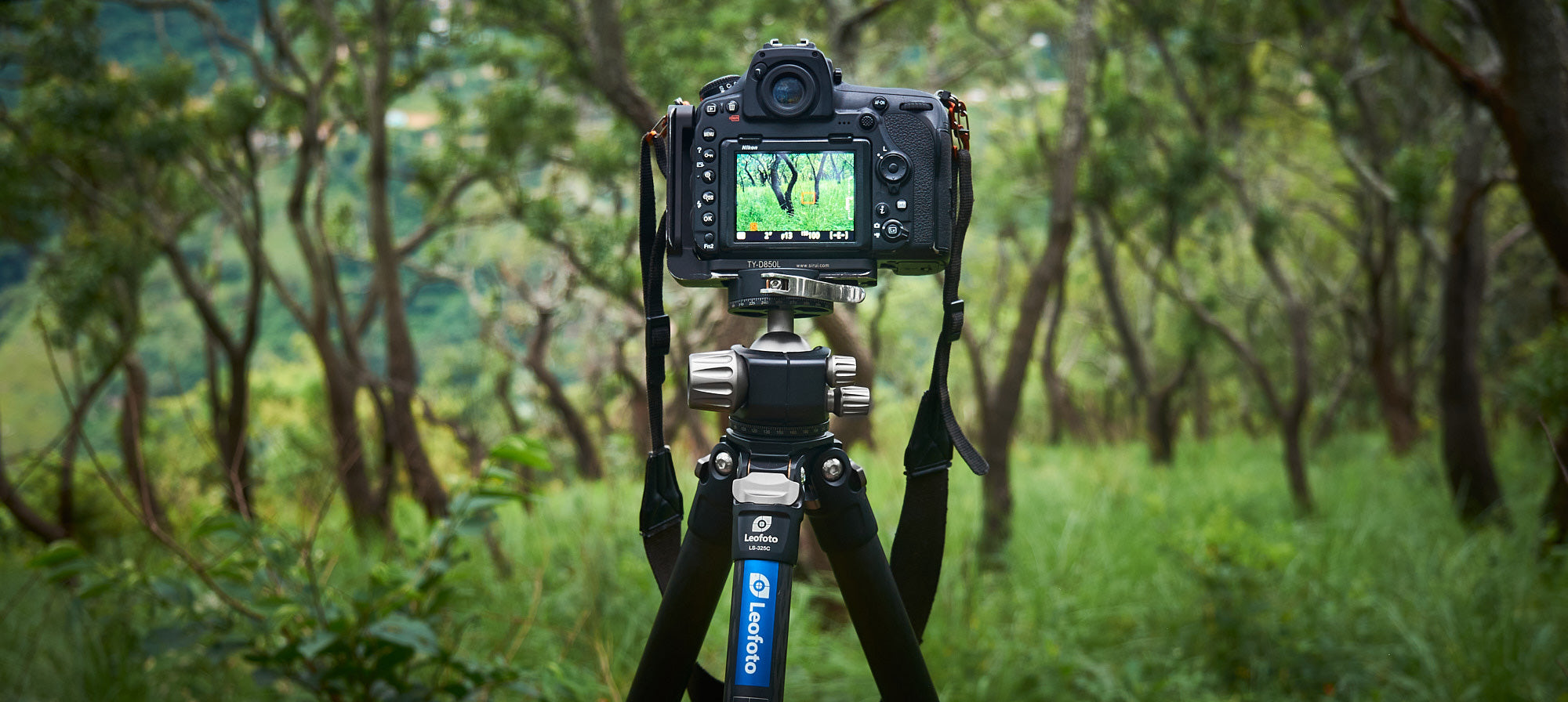Selecting a Leofoto Head
The first tripod that most people purchase invariably comes with a 3-way Pan and Tilt head. This is one of those tripod heads that has three knobs or grips that protrude from it, and when loosened allow movement in one axis. Hence: pan and tilt. The really cheap and nasty (and usually made of plastic) type that come grafted to a lightweight hollow tube tripod don’t even have three-way movement, having only pan (rotating 360 degrees parallel with the ground) and tilt (pointing downwards and upwards).
Pan and tilt heads, although effective in what they do, are slow and cumbersome to use, and are usually quite heavy. Anyone using a three-way head quickly starts to wonder if they weren’t designed by an engineer with three hands (as pointed out to me by Hougaard Malan). Basically, they are a pain to use. A ball-head is simply easier and faster to use - loosen the knob, orient the camera, tighten the knob, done! As a result, after the initial purchase, as the pastime of photography takes hold, many photographers gravitate towards a ball-head to replace their pan and tilt heads (or alternatively they purchase a better tripod that comes bundled with a ball-head).
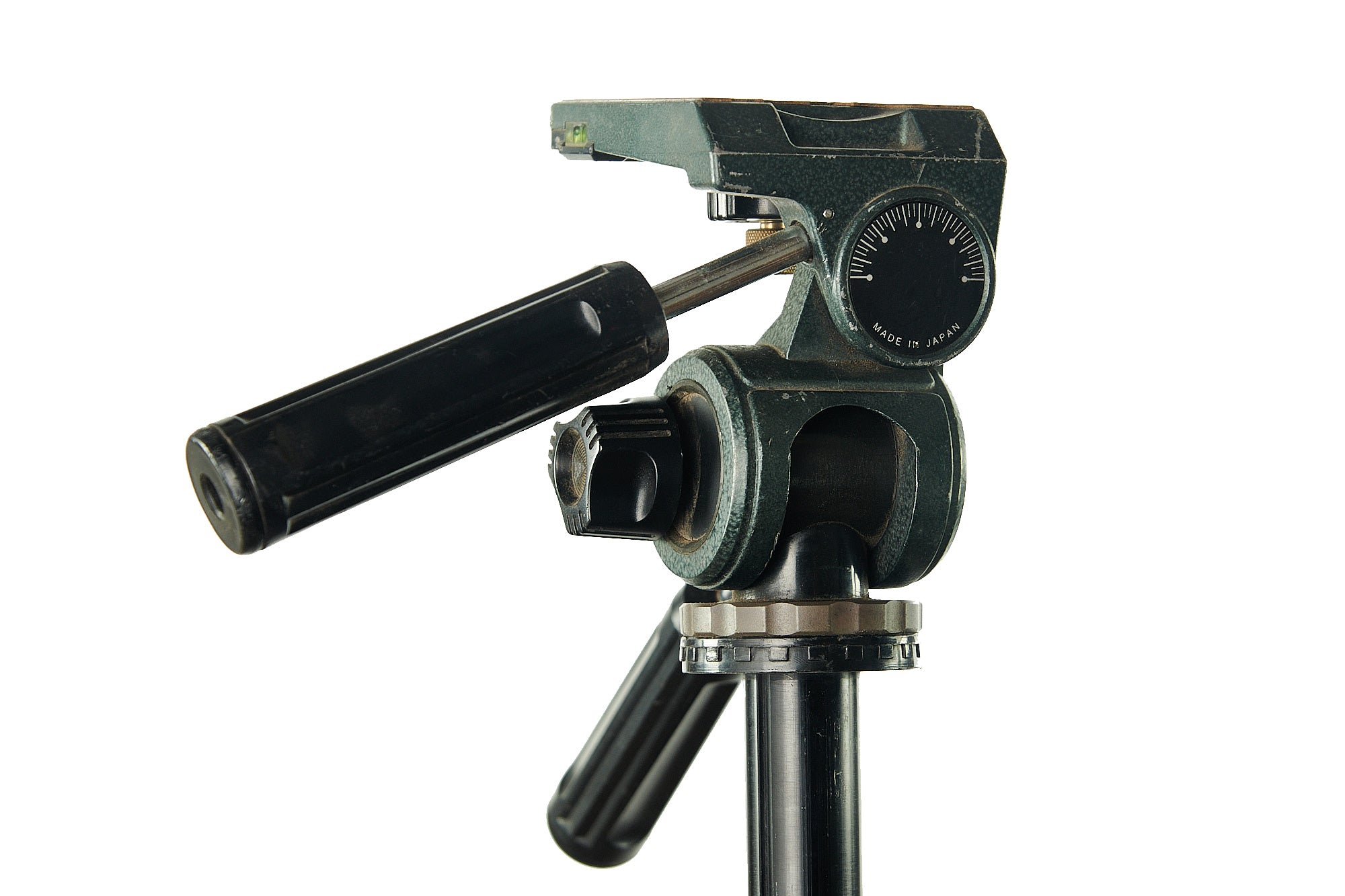
An example of a large 3-way pan tilt head that I actually still use from time to time, but which is heavy, cumbersome and slow to use.
This is not to say that pan tilt heads are useless. They are useful if you are going to do be doing video footage - where a ball head doesn’t work for tilting and panning at the same time - and some photographers prefer the slower approach to composition where they shift each axis individually. However, photographers who do use pan tilt heads for these purposes tend to opt rather for a fluid video head for the former, or a geared head for the latter. For the most part then, ball-heads are actually a more useful, easier and faster to use alternative for still photography. Ball-heads are also more commonly found on the mid to high end tripods whereas the pan tilt heads tend to be found on cheap entry-level budget tripods (like the ones you get with a bundle when you buy a camera from a wholesale retailer like Makro).
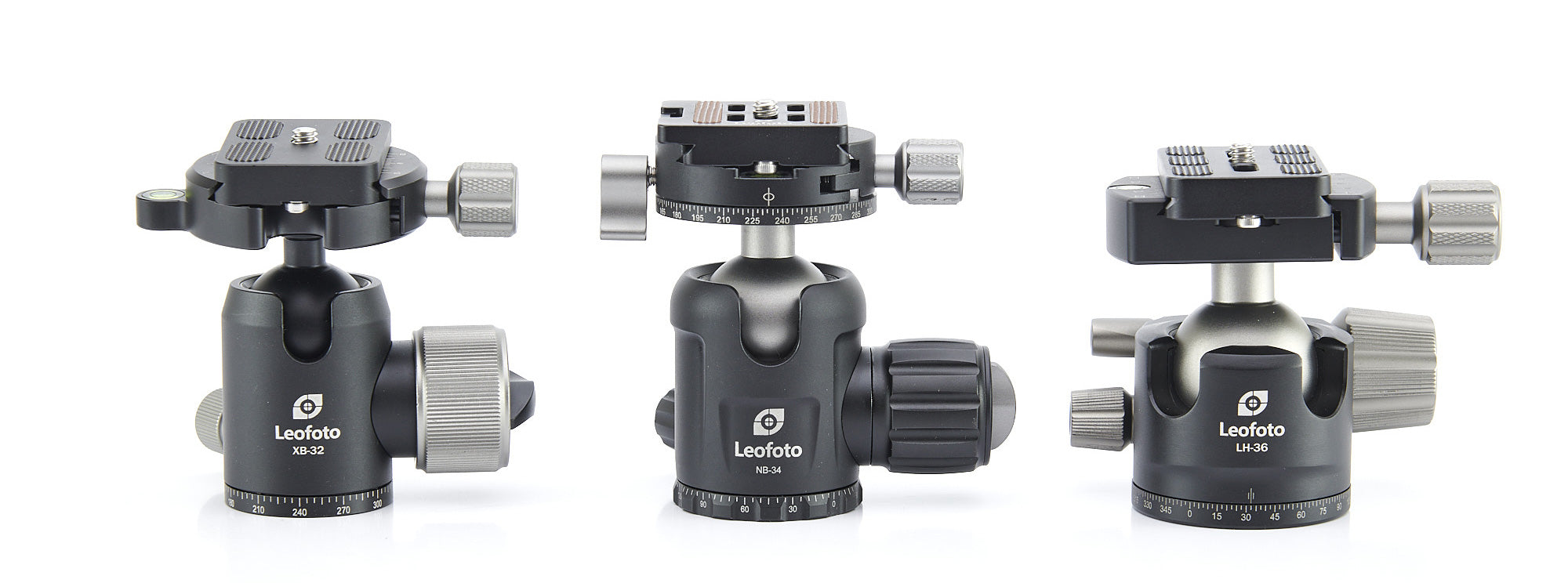
Low Profile Clamp Design vs. Cup and Ball Design
Leofoto have three premium ball heads that they market; the LH, NB and XB series. Of these series, there are two types of ball-head design based on the locking mechanism of the ball itself, these being the clam-like clamp (the LH series), and the cup and ball friction design (the XB and NB series). It is worth exploring the difference between the two designs as they influence how one selects a ball-head.
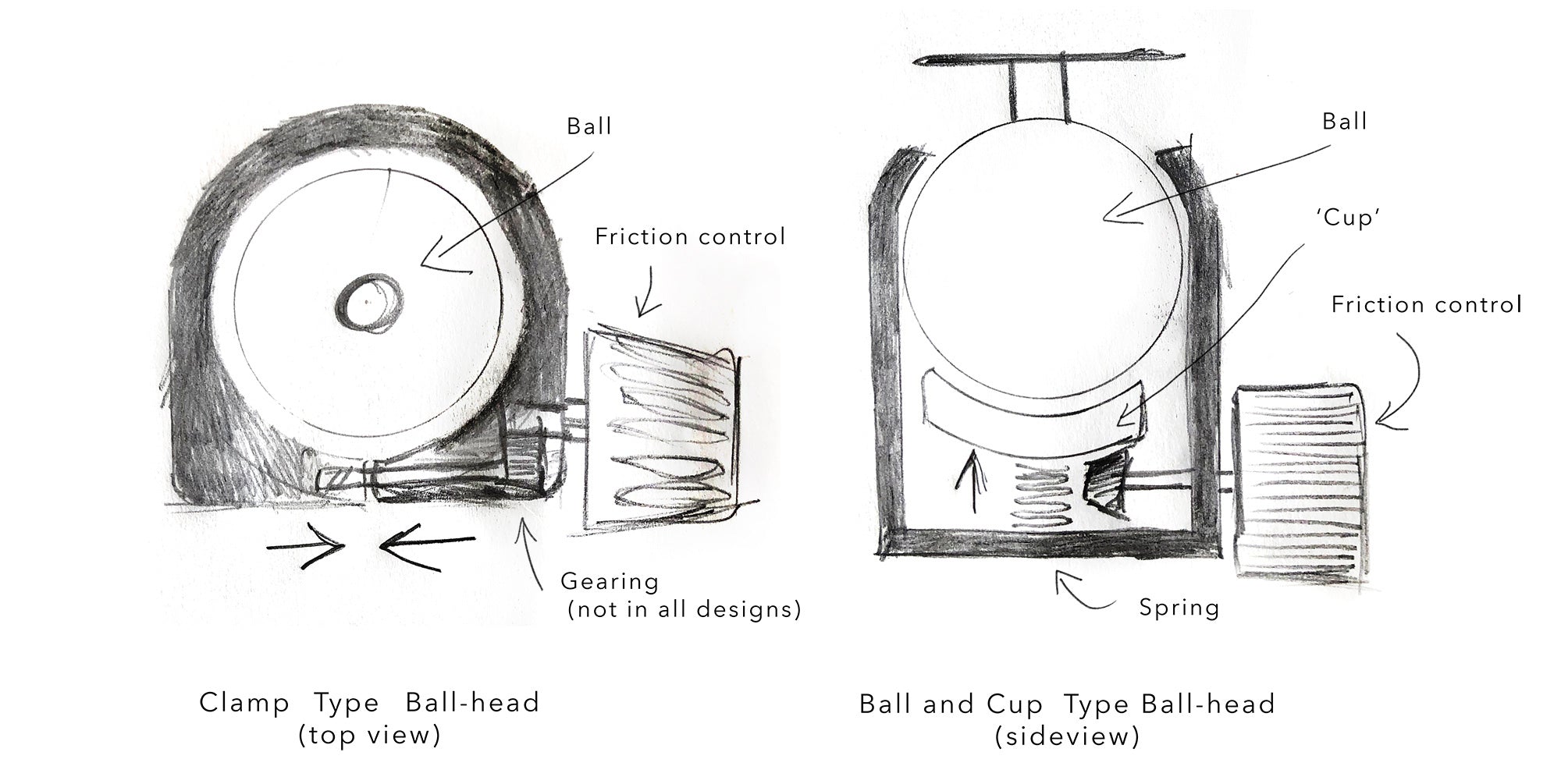
A traditionally designed ball-head uses a ‘ball and cup design’ that applies pressure, and therefore friction to the base of the ball. Essentially the ball sits on a steel or cast iron ‘cup’. This cup floats on a spring with a grub screw that works its way underneath the cup when you turn the friction control knob. As you tighten the knob, the grub screw slides under the cup, forcing it up and thereby gripping the ball between the cup and the head housing. The simplest designs don’t even have a cup; the friction control literally just tightens against the bottom of the ball, forcing it up against the top of the housing.
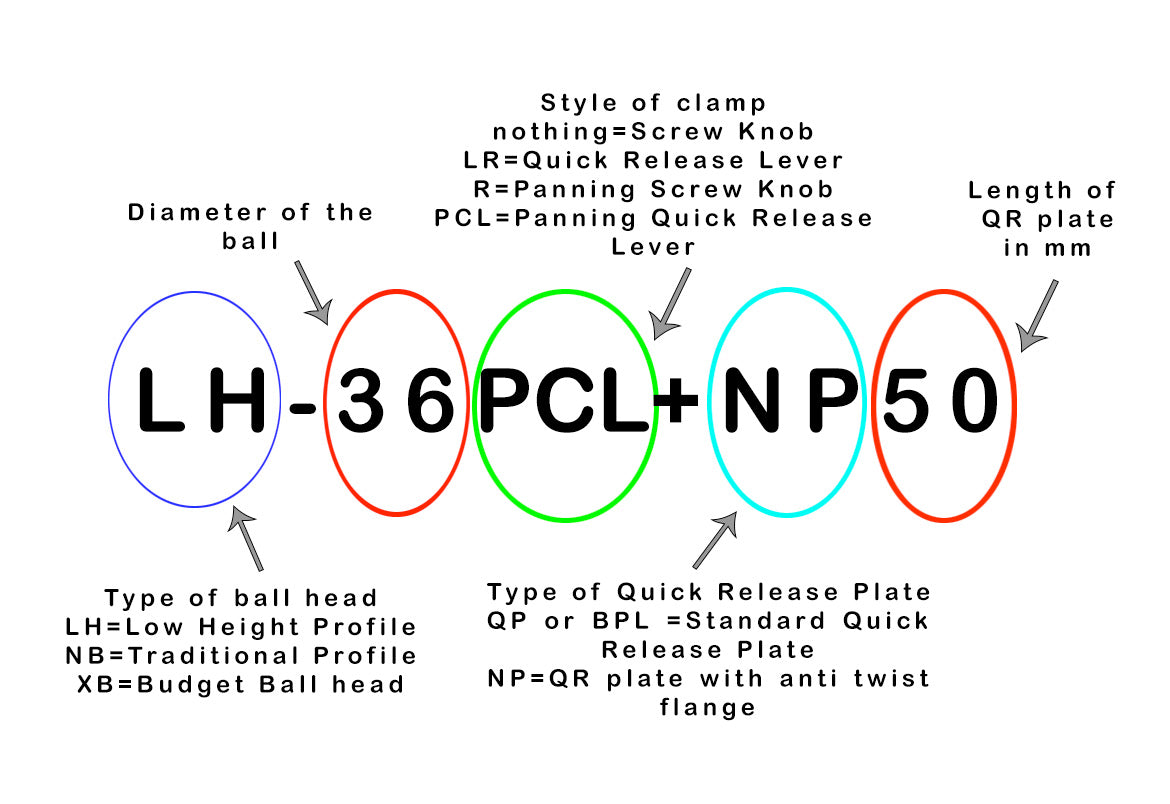
Due to the way that friction is applied to the ball from the bottom in a traditional ball-head design, traditional ball-heads can be quite tall, as well as heavy. The height adds the potential for sag after the ball has been clamped, although good quality traditional ball-head designs rarely exhibit pronounced sagging. The apparent advantage to the traditional ball-head design is that it is supposedly easier to fine-tune the amount of friction that the ball receives. Fine tuning the tension of the ball means that moving heavy camera rigs can be done with improved accuracy. The tension control creates a drag to the ball so that if you move a heavy camera rig, it doesn’t suddenly flop over, making composition difficult. Unfortunately the friction control can be fiddly to use and a lot of photographers end up grabbing whichever dial comes first to hand while they look through the camera. Manufacturers try to make dials that are differentiated by feel, but user error tends to get in the way. To mitigate this some manufacturers try and make the tension control smaller, or incorporate it into the main friction control, but this also leads to the tension control being finicky to use.
A clam shell ball-head design is different in that the entire housing, or a sleeve inside the housing, flexes and ‘grabs’ the ball. It’s a newer design principle to the traditional ball-head as it requires materials that have more flex and malleability than the steel housings that ball-heads used to be made out of. The inherent advantage of the clam shell design is that it can handle larger loads since the entire housing acts as a friction pad (as opposed to just the ‘cup’ in a traditional design), and is less likely to sag after locking down. The clam shell design also has a lower profile than a traditional ball head, which theoretically improves overall stability of the tripod and head setup (as you are bringing the camera closer to the apex of the tripod). In theory the clam-shell design can is prone to more dirt on the ball, since it is more exposed, but it is also easier to clean the ball, again, because it is more exposed. Additionally, since there are fewer parts in a clam-shell design, they are generally more resistant to damage and easier to maintain.

A range of ball sizes in the LH series from the diminutive but capable LH-25 through the versatile all-rounder LH-40 ball-head.
Another advantage of the low profile clam shell ball-heads, is that they are able to hold a comparatively larger ball compared to traditional designs. So a ball of 40mm will be in a slightly smaller and lighter body if the design is a clam shell, than if it were in a traditional ball-head. The basic idea is that a large ball should be used for a large and heavy camera system. The larger the ball, the more friction and gripping power the head will have on the ball (regardless of whether it is a clamshell design or a traditional ball-head design). Larger balls are easier to use in fine-tuning composition as well. Small movements are easier to make in other words. Whereas smaller ball-heads are difficult to make fine adjustments with.
There is lots of anecdotal evidence to support online forum debates as to which type of head is better. For the most part I prefer the low profile design as it ultimately allows for a larger ball with more clamping power than a similarly sized traditional ball-head design. For most photographers the pros and cons cancel each other out and it becomes a matter of preference. A well made ball-head of either design will give excellent service.

Understanding the Leofoto Range of Ball-heads

Leofoto produces three types of ball-head: A premium clam shell design (the LH series), a traditional ball head design with panning clamp (The NB series) and a lightweight traditional ball-head design (The XB series).

Most of the ball-heads can be configured with different types of locking clamp for the tripod plate. There are 4 types of clamp, all of which accept the Arca-Swiss dovetail-type quick release plate. The first two types of clamps are standard Arca-Swiss clamps that come with either a screw knob lock, or a quick release lever arm. The second two types of clamp rotate in a panning motion 360 degrees and lock in place with a small lever. Again, this rotating clamp comes with either a screw lock knob, or a quick release lever arm.

All three of the ball-head ranges have a series of ball sizes, with the LH range having the broadest array of ball sizes. For most photographers the large LH-55 is overkill. The LH-40 is a wonderful balance between large ball (40mm), weight and size.
The LH Range

The low-profile range of ball heads is the most comprehensive of the heads produced by Leofoto. It starts with the diminutive LH-25 with a tiny 25mm ball through to the large LH-55 with it’s 55mm ball. Apart from the two small LH-25 and LH-30 ball heads, all of the LH range have dual drop slots for the neck of the ball to slot into for vertical composition. Similarly, all of the series except the two smallest have tension control knobs which are sufficiently different to the main that it would be difficult to confuse them while in operation. As mentioned above, adjusting the tension on the main friction control can be fine-tuned more accurately with the main knob than with traditional designs. All of the sizes except the tiny LH-25 have a panning base with a separate knob for adjusting the friction of the pan. If the camera is light enough though, the LH-25 has a half turn on the friction control that allows the main ball to remain locked while the pan base will move freely.
The design of the LH range is from a solid piece of aircraft grade aluminium with an additional internal sleeve that grips the ball to clamp it in place. All markings are lazer engraved on the black anodised finish of the head. The controls are generously sized knobs with distinctive cutout grooves for grip. The two small heads have tap like controls as opposed to knobs as the heads are too small to incorporate a large knob.
Unique to the LH range is the bottom mounting 3/8” screw thread which is made of brass rather than the usual stainless steel. I am a fan of the use of brass for screws as temperature variation has less effect on brass than steel or aluminium, which can expand or contract in extreme hot and cold conditions. The result of this expansion is that screw threads can actually lock (a constant problem with filter threads made from aluminium and which subsequently lock together).
The NB Range

The NB heads are made with the same aircraft grade aluminium as the LH heads. They also have the same hollow core ball as the LH series. Where they differ is obviously in the design of the clamp. The advantage of the ball and cup design for the NB ball-heads is that the tensioner on the friction knob is very accurate, producing a definite range of gradation in the amount of drag that can be achieved on the ball.
The really nice feature of the NB ball-heads (and it is repeated in the XB range) is that the tension control is built into the main friction control as a easy to access and set dial. It is one of the best tension controls I have seen and used. It is not fiddly, it is easy to change and there is no accidental turning of the tension control instead of the main friction control.
The XB Range

The XB Range could be viewed as Leofoto’s lightweight travel range, although they are really for anyone who is trying to shave weight in any way possible. They often come bundled with the Urban range of tripods, which similarly are geared towards being as lightweight as possible. Expect each of the ball-heads to be be at least 100g lighter than the counterpart in the NB range. There’s a can of tuna difference between the XB38 and the NB40! So, if you are pinching pounds, then the XB is an interesting alternative.
To differentiate the XB from the NB, the XB heads, as well as the large cavity ball, are finished all over in a slightly greyed black agonised finish. The ribbing on the friction and pan controls is also a narrower linear pattern that is very different to that of the knurled knob of the NB ball-heads.
Summary
The Leofoto offerings essentially give photographers a plethora of options to cater to every taste at a reasonable price. For photographers who like the look, feel and workings of a traditional ball head, the NB range are an excellent alternative (and in the way that the tension control works, I would say superior) to more expensive American and European brands. For photographers who crave shaving every possible milligram of weight out of their kit the XB range are an amazingly light and competent traditional design. Then for photographers who need extreme clamping power and rigidity, the low-profile LH range are a brilliant introduction to the South African market. My personal take on the LH range, having now used it for some time is that I wish more manufacturers would incorporate similar designs into their product line-ups. It is excellent, and currently my preferred ball head.
View Leofoto Tripod Heads
Emil von Maltitz is a professional landscape and commercial photographer who spends most of his time photographing industry and agriculture for clients like Tongaat Huletts. You can find his incredible body of work here.
